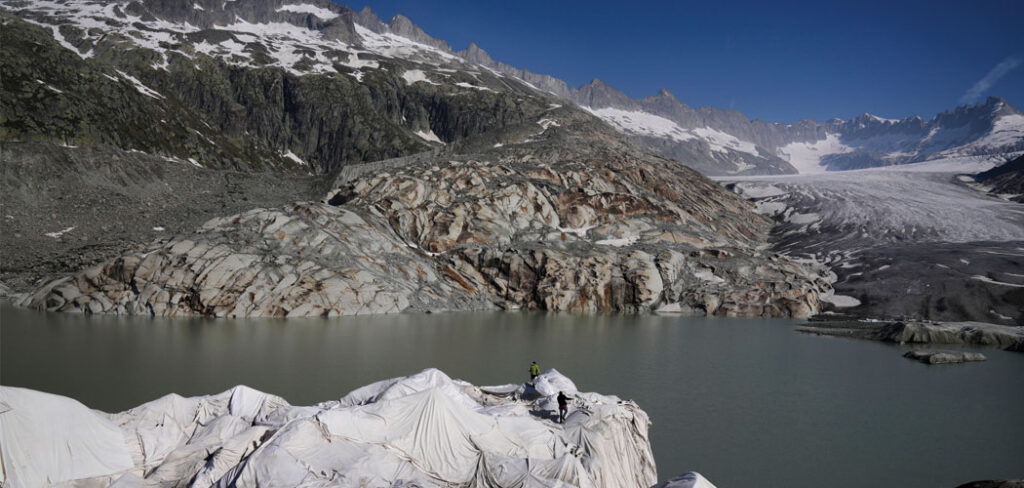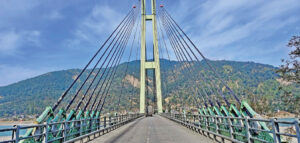
Climate alter shows up to be making a few of Switzerland’s vaunted icy masses see like Swiss cheese: full of holes.
Matthias Huss of the ice sheet observing bunch GLAMOS advertised a see of the Rhone Icy mass, which bolsters the eponymous stream that streams through Switzerland and France to the Mediterranean, shared the perception with The Related Press this month as he trekked up to the frigid field for a to begin with “upkeep mission” of the summer to screen its health.Glaciers show holes reminiscent of Swiss cheese.
The state of Switzerland’s ice sheets came into stark and sensational see of the universal community final month when a mudslide from an Elevated mountain submerged the southwestern town of Blatten. The Birch Ice sheet on the mountain, which had been holding back a mass of shake close the crest, gave way — sending an torrential slide into the valley town below.
Experts say topographical shifts and, to a lesser degree worldwide warming, played a part. Luckily, the town had been generally cleared previously, but Swiss specialists said a 64-year-old man had gone lost after the occurrence. Late Tuesday, territorial Valais police said they had found and were analyzing human remains of a individual who kicked the bucket in the mudslide.Glaciers show holes reminiscent of Swiss cheese.
The Alps and Switzerland — domestic to the most ice sheets in any European nation by distant — have seen them withdraw for approximately 170 a long time, but with ups and downs over time until the 1980s, he said. Since at that point, the decay has been relentless, with 2022 and 2023 the most noticeably awful of all. Final year was a “bit superior,” he said.
“Now, this year too doesn’t see great, so we see we have a clear speeding up slant in the dissolving of ice sheets,” said Huss, who too is a speaker at the Government Organized of Innovation in Zurich, ETHZ, said in radiating daylight and with slushy ice trickling underfoot.
The European Union’s Copernicus climate center said final month was the second-warmest May on record around the world, in spite of the fact that temperatures in Europe were underneath the running normal for that month compared to the normal from 1991 to 2020.Glaciers show holes reminiscent of Swiss cheese.
Europe is not alone. In a report on Asia’s climate discharged Monday, the U.N.’s World Meteorological Organization said decreased winter snowfall and extraordinary summer warm final year “were rebuffing for icy masses” — with 23 out of 24 ice sheets in the central Himalayas and the Tian Shan run enduring “mass misfortune” in 2024.
A solid icy mass is considered “energetic,” by creating unused ice as snow falls on it at higher rises whereas softening at lower heights: The misfortunes in mass at lower levels are compensated by picks up above.
As a warming climate pushes up the softening to higher elevations, such streams will moderate down or indeed halt inside and out and the ice sheet will basically ended up “an ice fix that is fair lying there,” Huss said.Glaciers show holes reminiscent of Swiss cheese.
“This is a circumstance we are seeing more and more regularly on our icy masses: That the ice is fair not energetic any longer,” he said. “It’s fair resting there and dissolving down in place.”
This need of energetic recovery is the most likely prepare behind the rise and tirelessness of gaps, apparently caused by water turbulence at the foot of the icy mass or discuss streams through the crevices that show up interior the pieces of ice, Huss said.
“First the gaps show up in the center, and at that point they develop and develop, and abruptly the roof of these gaps is beginning to collapse,” he said. “At that point these gaps get unmistakable from the surface. These gaps weren’t known so well a few a long time back, but presently we are seeing them more often.”
Such an influenced ice sheet, he said, “is a Swiss cheese that is getting more gaps all over, and these gaps are collapsing — and it’s not great for the glacier.”
Richard Back road, a geosciences teacher and glaciologist at Penn State College, famous that ice sheet shrinkage has wide impacts on horticulture, fisheries, drinking water levels, and border pressures when it comes to cross-boundary rivers.
“Biggest stresses with mountain ice sheets may be water issues — presently, the contracting ice sheets are supporting late spring (regularly the dry season) streams that are oddly higher than typical, but this will be supplanted as ice sheets vanish with strangely moo streams,” he said in an email.
For Switzerland, another conceivable casualty is power: The Elevated nation gets the tremendous lion’s share of its control through hydroelectric plants driven from its lakes and streams, and wide-scale icy mass liquefy may jeopardize that.
With a whirr of a winding penetrate, Huss sends ice chips flying as he bores a gap into the icy mass. At that point with an collaborator, he spreads out a jointed metal post — comparative to the fundamental glacier-monitoring innovation that has existed for decades — and clicks it together to drive it profound down. This serves as a measuring adhere for ice sheet depth.
“We have a arrange of stakes that are penetrated into the ice where we decide the dissolving of the mass misfortune of the icy mass from year to year,” he said. “When the icy mass will be dissolving, which is at the minute a speed of approximately 5 to 10 centimeters (2-4 inches) a day, this shaft will re-emerge.”
Reaching up over his head — approximately 2.5 meters (8 feet) — he focuses out the tallness of a stake that had been penetrated in in September, proposing that an ice mass had contracted by that much. In the super-hot year of 2022, about 10 meters of vertical ice were misplaced in a single year, he said.
The planet is as of now running up against the target cap increment of 1.5 degrees Celsius in worldwide temperatures set in the Paris Climate Agreement of 2015. The concerns around worldwide warming that driven to that bargain have of late been eclipsed by exchange wars, clashes in Ukraine and the Center East and other geopolitical issues.
“If we oversee to diminish or constrain worldwide warming to 1.5 degrees, we couldn’t spare this icy mass,” Huss said, recognizing numerous Swiss icy masses are set to vanish in the future. As a individual, Huss feels feeling. As a glaciologist, he is awestruck by the speed of change.
“It’s continuously difficult for me to see these ice sheets dissolving, to indeed see them vanishing totally. A few of my checking locales I’ve been going to for 20 a long time have totally vanished in the final a long time,” he said. “It was exceptionally pitiful — if you fair trade this wonderful, glossy white with these fragile rocks that are lying around.”
“But on the other hand,” he included, “it’s too a exceptionally curiously time as a researcher to be witness to these exceptionally quick changes.”Glaciers show holes reminiscent of Swiss cheese.
Related,
International Business Forum concludes in Australia with launch of Nepal–Australia Magazine






